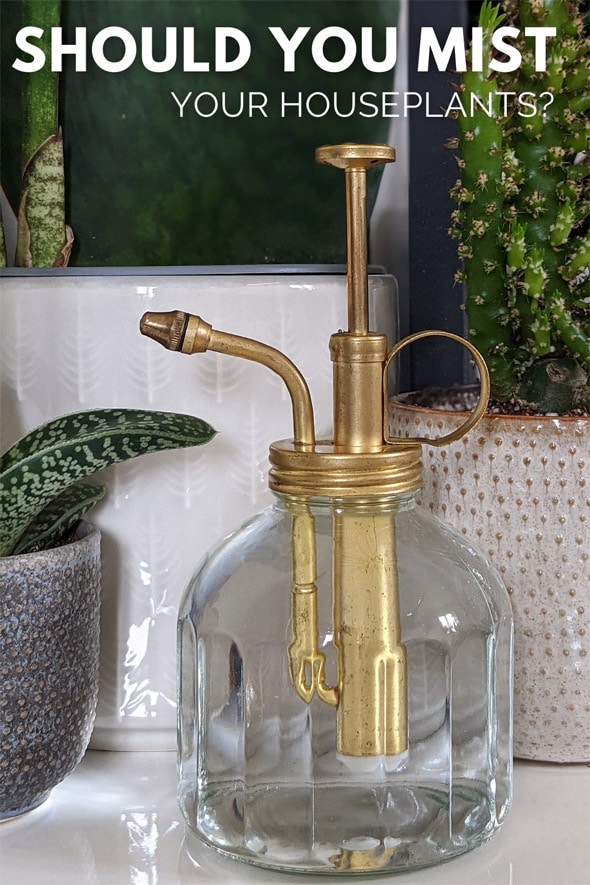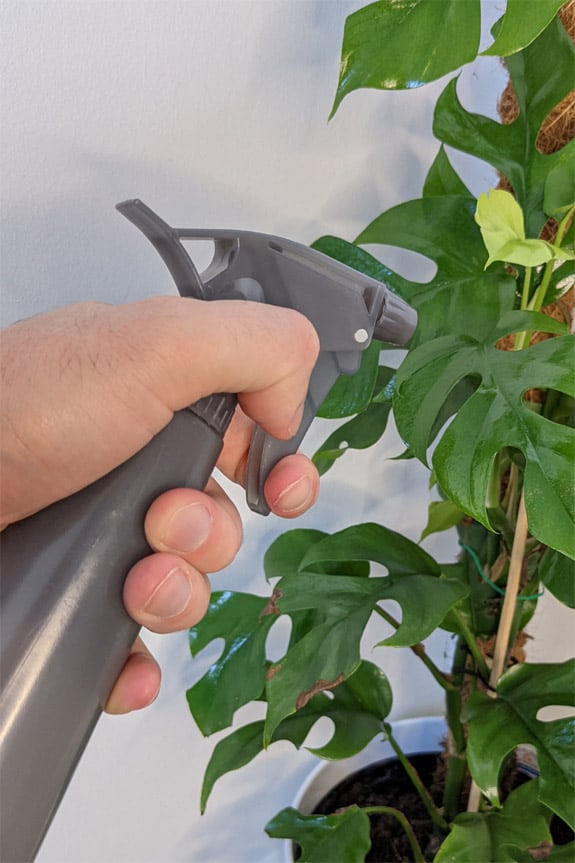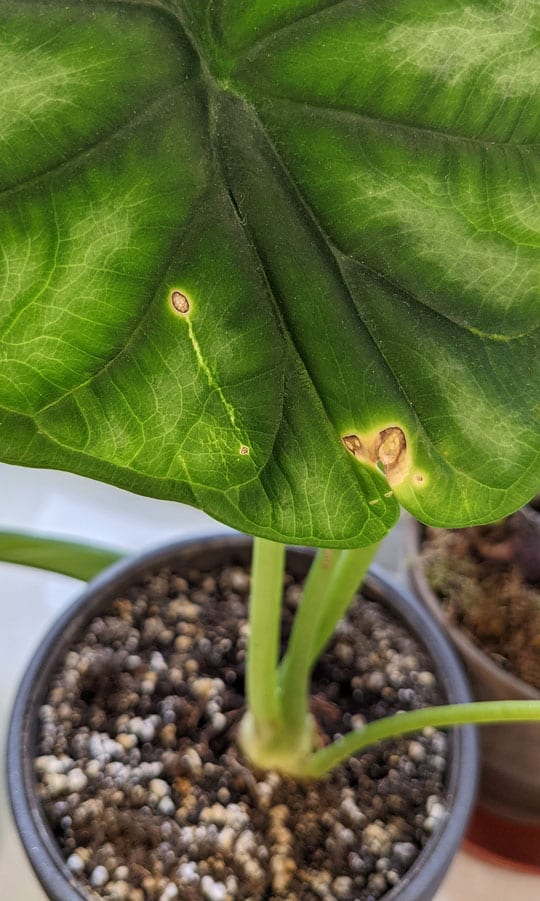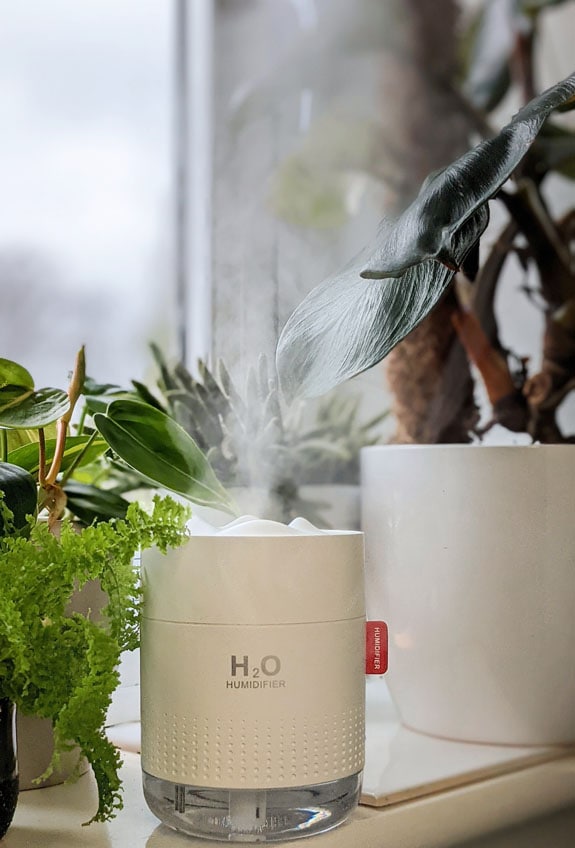Misting is an effective way to raise the humidity level around your houseplants. But it's not a long term solution to resolving low humidity issues, and by itself, reaching for the plant mister every few days won't make your tropical plants happy.
The lack of humidity in your home won't be solved by a good misting, and you'll need to look at other ways of sorting this problem out.
However, a spray mister does have several positive benefits and the rest of this article looks at these and fully explains why misting doesn't work by itself.
Dry air can be a real problem for houseplants in some homes, especially during the winter months. But can misting really provide the extra moisture that they need?
Before we delve deeper, let's make sure we're on the same page by explaining what misting is and why so many people think you need to do it.
All homes have a variable level of humidity that's measured in percentages (we have a full detailed article that goes into all this) whether that's low, high humidity or somewhere in between. Most homes will have a natural level of somewhere between 20% - 60%.
Humidity Levels in different rooms of your home are probably different.
Anything that dries the air and warms it up will cause the surrounding relative humidity to lower. Air conditioners or heating systems like radiators or wood burners are good examples.
But in the same home an unheated spare room or hallway could have much higher levels. This is another thing to consider when choosing locations for your indoor plants.
Many plants will suffer at the lower end and tropical indoor plants will really struggle with it. Most houseplants will tolerate the higher range of that estimate, however even at 50%+, that's not enough for some plants, which will demand more. Examples of these are the Fiddle Leaf Fig, the Prayer Plant or most Calathea species.
If you fail to provide what's needed, then you will typically see this in the plant itself. For example, crispy brown leaves for no apparent reason is a strong indicator of a humidity problem. If you constantly have Spider Mites, this could also be another indication as these pests thrive in arid environments.
This is where misting comes in. It's a highly recommended method to increase humidity levels to replicate those found in their natural habitat. This is done by using a mister or spray bottle to produce a mist of water droplets that gently fall and settle on and around the plant.
These water droplets then evaporate, which increases the humidity in the surrounding area. Your plant gets a huge smile and everyone is happy. That's the idea behind it anyway. The reality is a little different.

Hi, I'm Tom!
If you're like me and enjoy the challenge of growing houseplants and getting them to thrive, then Ourhouseplants can help. This website shares my knowledge and years of growing plants and provides (hopefully) helpful advice on properly caring for your indoor plant friends.
A pebble tray can help create a more humid environment, but they're not always practical. So it's understandable that people turn to daily misting instead.
For this one you just need to put on your science hat and think about it logically.
Tropical houseplants like this Alocasia dragon scale, like higher humidity levels, but misting can affect the health of your plant. This one has a fungal disease.
It's not all bad news and misting certainly isn't a waste of time in certain circumstances.
It's a myth that misting effectively solves the problem of low humidity. It can temporarily resolve it, yes absolutely, but as you can see from what we've said already, it's not efficient. It can also trigger or cause additional health issues for your plants.
Yeah, mist your houseplants if it meets one of the three benefits we've outlined already. If you do it occasionally, the highlighted negative issues should be rare.
Misting can't resolve the problem of low humidity levels in your home.
If you have a problem with low humidity and your plants are suffering then misting just isn't going to cut it.
Here's a 30 second video summary (click image to play).
The single best thing you can do is look into getting a humidifier. This is an appliance that increases the moisture in a single room by turning water into steam or water vapor before releasing it into the room. It will create a tropical feel and provide extra humidity (as long as it's switched on!).
Extensive houseplant collections that cover a large space might need to invest in a larger machine. But if you have a handful of tropical plants close together, there are some very good Portable Mini Humidifiers on the market that do a perfectly adequate job for a smaller space like this.
The one below from Amazon is less than $20 (not much more expensive than a good quality mister) and for me, it consistently increases the surrounding humidity in the room it's in to 70%+. (We do recommend this humidifier. Although this isn't a sponsored post we do have a Affiliate link to it below if you want to find out more).
This humidifier from Amazon can really help create a tropical climate and prevent dry environments. My Philodendron White Knight (pictured on the right) loves it.
I own a mister. Several in fact. I know the science, but I do still love the act of going around and spraying them every few weeks. So yes it's worth it for me. But I'm not doing it to raise the moisture in the air. For that I use my humidifiers. They have a specific purpose and work well in helping to create tropical areas in my home.
Humidity levels are really important for many houseplants and can be the deciding factor if you can keep a particular plant for a few months, or keep it for years and years. Make sure you check out our "Humidity and Houseplants Guide" for more information.



